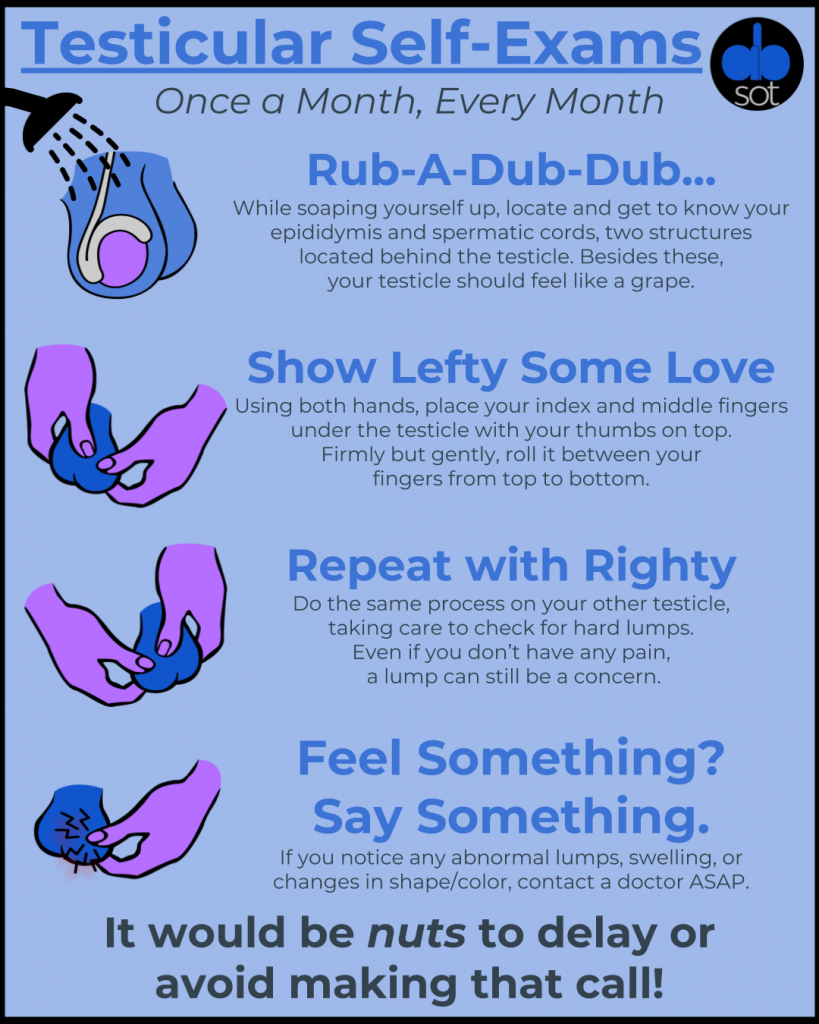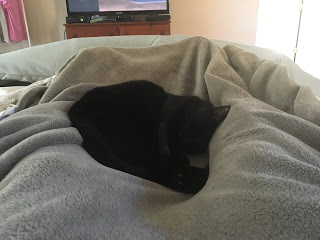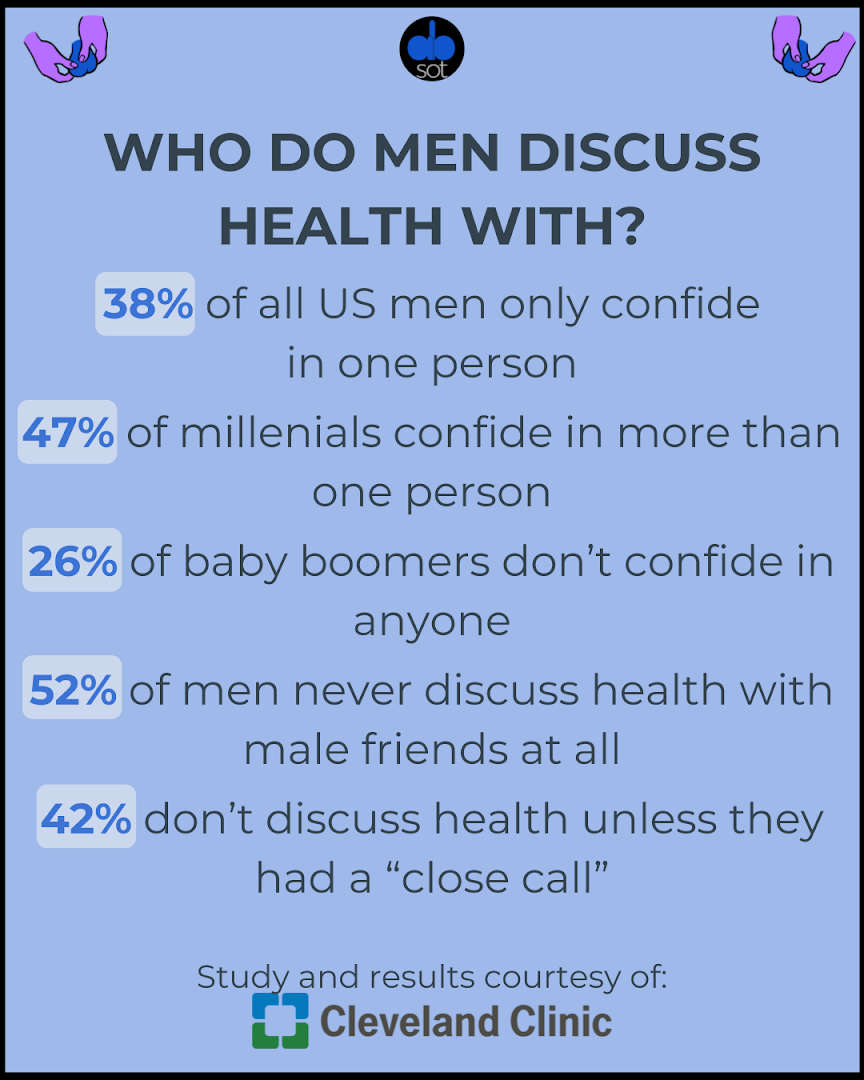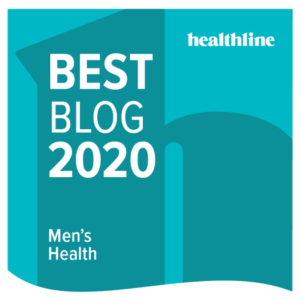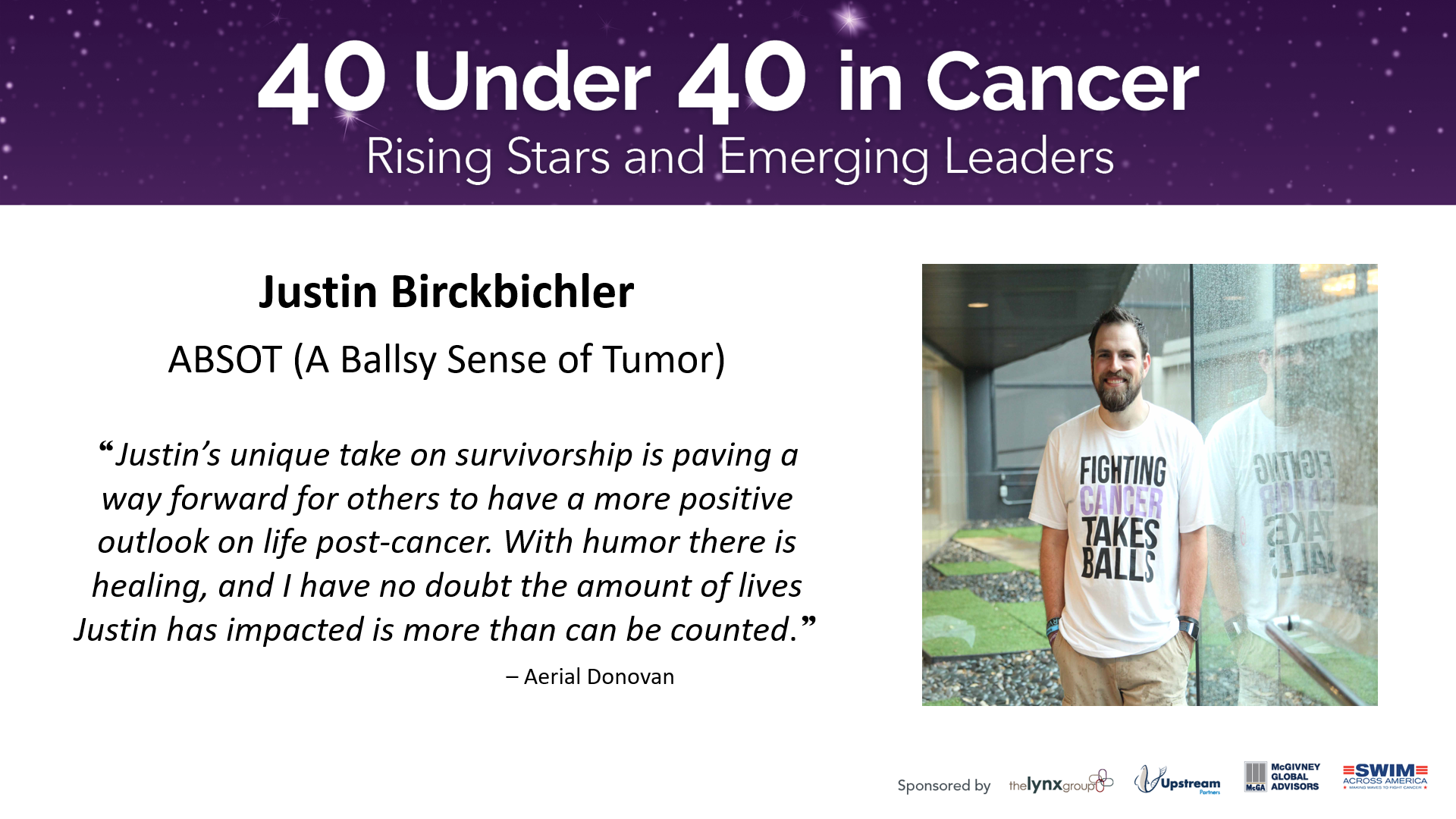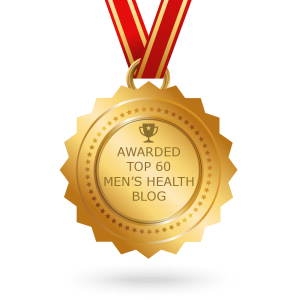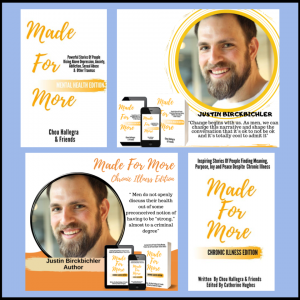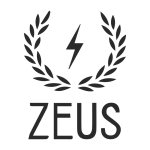“Feminism has helped women to re-interpret womanhood and break down feminine stereotypes. I don’t feel this has happened enough for men.” — Laura Dodsworth in Manhood: The Bare Reality
“Breasts and penises are not direct counterparts but both embody ideas of femininity and masculinity, womanhood and manhood, and offer intimate windows into our emotional and psychological worlds.”
Thus opens Manhood: The Bare Reality by Laura Dodsworth. This book is a sequel of sorts to The Bare Reality, the original book in the series where 100 women had their breasts photographed and shared what it meant to them to be a woman. In this edition, penises took the stage as men shared their stories of what manhood meant to them (including Band of Ballers alumni Matt Wakefield).
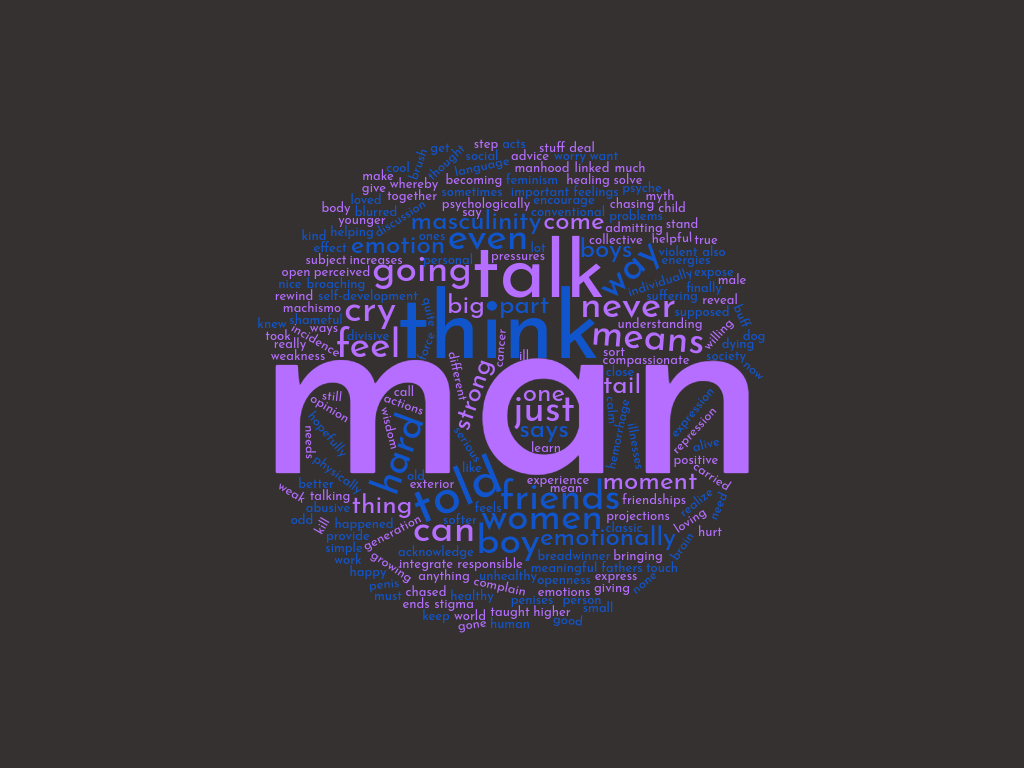
In why they sacked up, stripped down, and answered the call of duty, two men had this to say:
“If women are going to stand there and expose themselves in that open way, then to be one of the men who is willing to do that is a really positive thing.”
“”Penises are so linked to our psyche. Language says it all, we call a penis our ‘manhood.'”
As I read the book, I saw many interesting things, and I’m not even referring to the multitude of penises (there is also a strong narrative of what word to use when referring to the penis as throughout the book; I settled for the anatomical term in this piece).
Throughout the 300 pages, major themes arose about the concept of manhood and masculinity. These themes mainly revolved around the differences between “traditional manhood” and “transformational manhood” – not terms used in the book, but I like alliteration so that’s what we’re going with.
These selected quotes (in italics and used with permission of publisher) were moments that made me think about my own experiences growing up as a boy, adolescent, and man and how we can shape the future of our sex.
The concept of “traditional manhood”
“We’re taught that men must work hard, provide, be the breadwinner, be strong emotionally and physically, and that’s it really.”
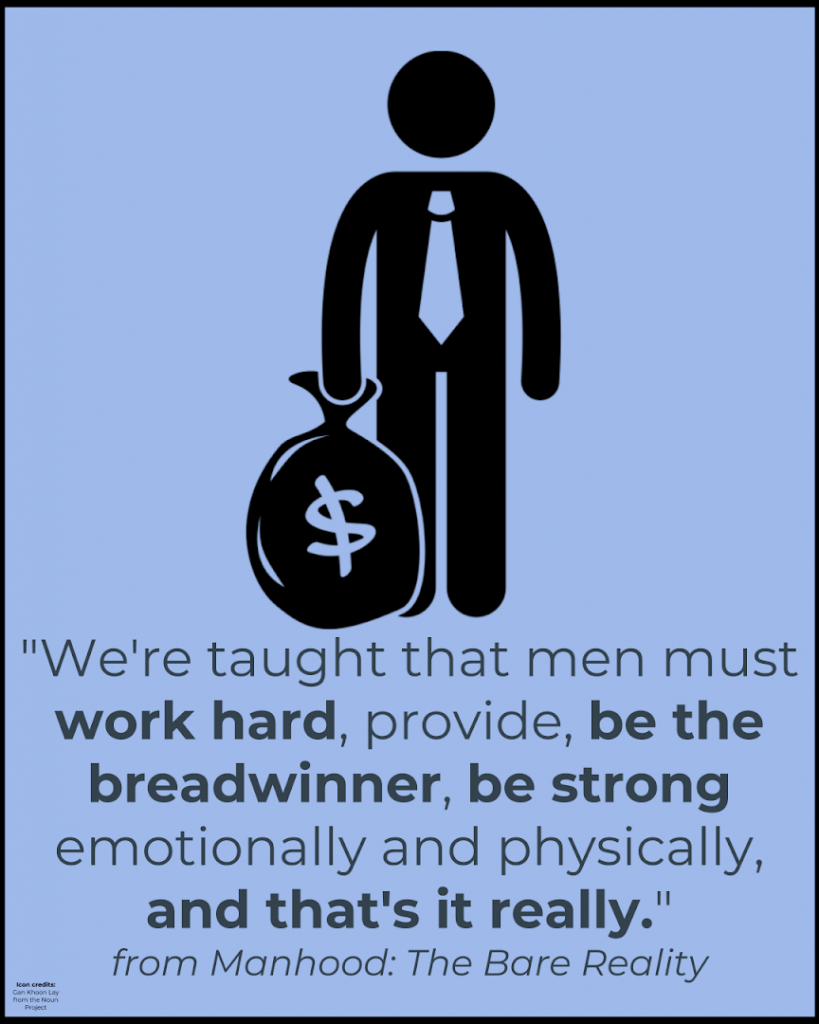
“The classic social pressures mean that it can feel very shameful for a boy to… be perceived as weak.”
“Masculinity says you don’t talk about stuff.”
These and many similar quotes were woven throughout the book. Throughout history, men were supposed to keep their emotions in and just provide for the family. This narrative must change. Not belabor the point, but I’m calling this viewpoint of manhood “traditional” for a reason.
How “traditional manhood” impacted men’s health
“As a small child, you were told, ‘Big boys don’t cry.’ I think this is why men sometimes have a higher incidence of some of the serious illnesses because we don’t like to complain about being ill.”
“The conventional wisdom is that men don’t like to talk about things, and that they are suffering and even dying because they don’t talk about this part of their body.”
As this is a driving force and predominant theme behind the mission of ABSOT, these lines aren’t new information. Nor are these notions just the musings of random men. The MENtion It survey from the Cleveland Clinic has consistently shown over the past three years that men just choose not to open up about their health.
However, what is most revealing about these quotes delves into why men might keep things close to their chest. Personally, I know I heard time and time again while growing up that “big boys don’t cry” and because of that stereotype, I was very reluctant to call my doctor when I discovered a lump during my monthly self-exam. We need to open up lines of communication to dispel any sort of shame or stigma attached to freely discussing men’s health.
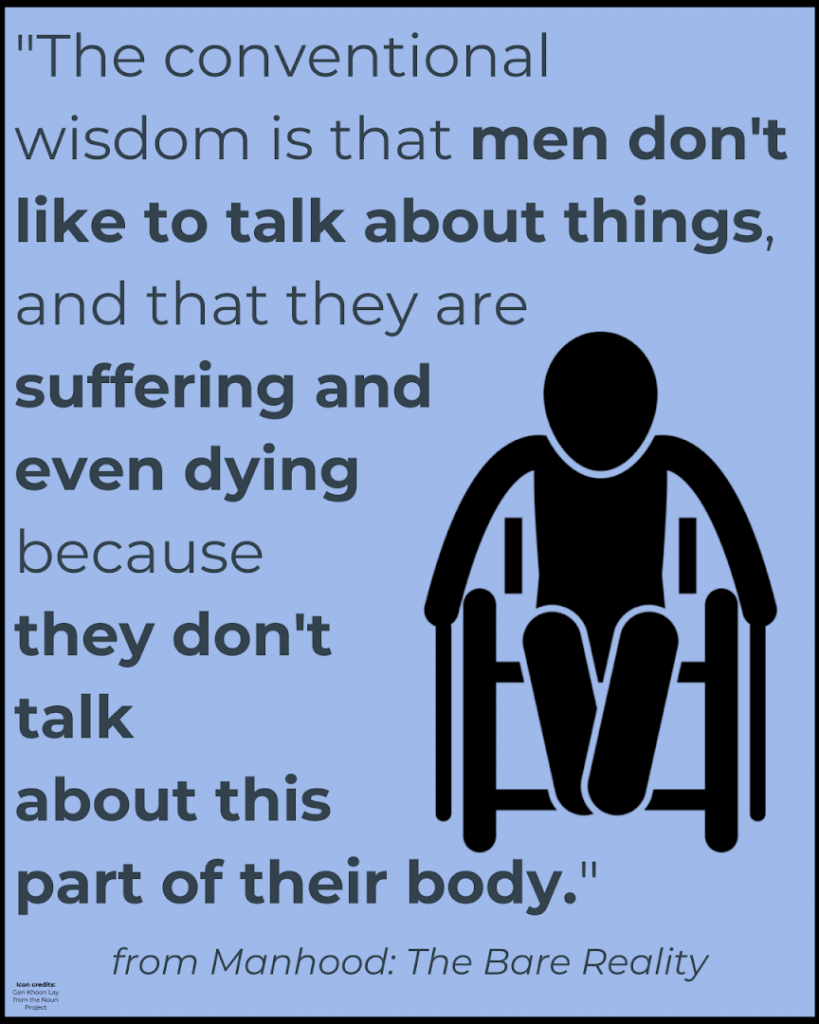
Here are a variety of ways to talk about men’s health in a natural manner, ranging from using current events to witty remarks to simply grabbing the conversation by the ball and being blunt about this crucial topic.
How “traditional men” interact with other “traditional men”
“I can’t talk to any of my male friends about anything meaningful emotionally or psychologically.”
“My men friends and I don’t have the sort of friendships where we talk about personal things. I never really knew how to make it different”
Prior to cancer, the majority of dialogue with my close male friends included random bantering, ‘roasting’ each other, and discussing movies, but nothing of real substance. I think this really aligns with what “traditional manhood” is all about – keeping deep thoughts and feeling to yourself. Since my experiences with testicular cancer, many of my conversations with my friends have delved into more serious topics, including taking care of their health and taking a real look at the future.
The second quote in this section bemoans that that guy didn’t know how to make it different. In my opinion, he’s halfway there. Recognizing that a disparity exists is the first step, and it must be followed by concrete action steps to fix this. Be that guy to take the first step and ask about personal things with your buddies. Eventually, it will feel less awkward.
Transitioning from “traditional manhood” to “transformational manhood”
“As men, we are told to be have a cool, calm exterior, never cry, brush things off. But you need to have emotion.”
“I think as a boy growing up, to be a man was to be strong, to be hard, to not cry. And then I was told that wasn’t OK, that I should be softer.”
“The old way of bringing up boys, whereby you are not really supposed to express feelings much, ends up with men doing odd things, and those energies can come out in other ways which are unhealthy. Talking and expression are a big part of healing.”
“When I was younger, I thought being a man was about being buff. Now it’s about being a good person and giving to society”
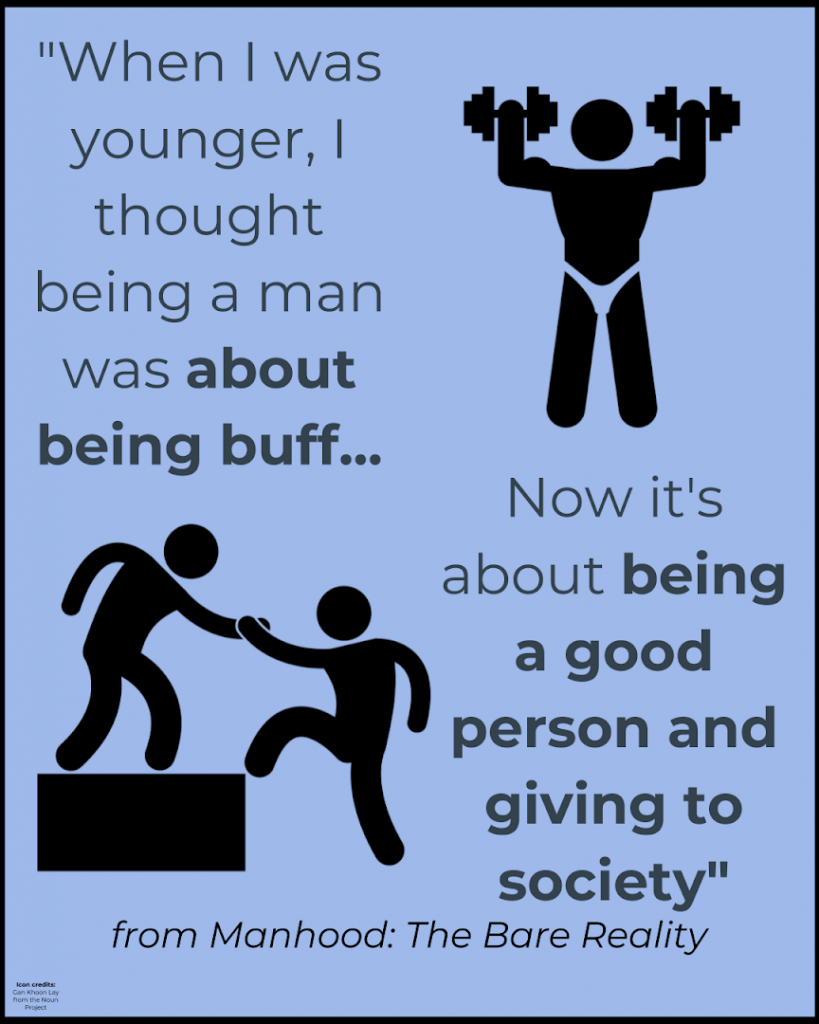
I’m not going to weigh in too much on these quotes since they do an excellent job of speaking for themselves. While my commentary is absent, I made it a point to include them here to show that many many are aware of the dichotomy of being raised in the “traditional manhood” eras as we enter into the “transformational manhood” time.
The concept of “transformational manhood”
“Being a man means being loving, kind, compassionate, being there for your friends and loved ones”
“I feel that when men come together and talk we can integrate our emotions and then be true in our actions.”
This is the heart and soul of the book. While there were a few quotes that reinforces “traditional manhood” concepts, they were shared by men who had their penises photographed a few minutes earlier and were sharing some of their deepest and darkest moments in their lives. (As I was typing this, I really had to wonder – were the interviews taped while they were still naked or did they get dressed first?)
We need to talk more – not about sports and women and stereotypical “guy things,” but about what really drives us as people.
Topics like our physical and mental health, our worries and insecurities, our hopes and dream, and our overall emotions should become commonplace.
I’m stealing a challenge from my friend, Dave Fuehrer: “If I can ask you to take one action, it is to admit to something that scares you. Admit it to a friend, to a partner, or to a piece of paper. But just admit it.” No matter if you’re talking to your male buddy, your wife, or a mashed up dead tree, it’s the first step in being a “transformational” man.
“My boy is very in touch with how he feels and I encourage that. I think it’s important that as fathers we step up. At the moment, in the collective… there’s more discussion about self-development.”
While I don’t have children of my own, this quote still resonates strongly. It’s showing that not only is this father recognizing the value of “transformational manhood,” he’s working on instilling and encouraging it in his own son. In that boy’s life, he may see the end of “traditional manhood” as we know it. He may even be able to answer my final question as I closed out the book…
Should we even be asking what a man is?
“What being a man means is becoming quite blurred”
“I don’t like to think about what being a man means. We’re not just men and women. We’re human.”
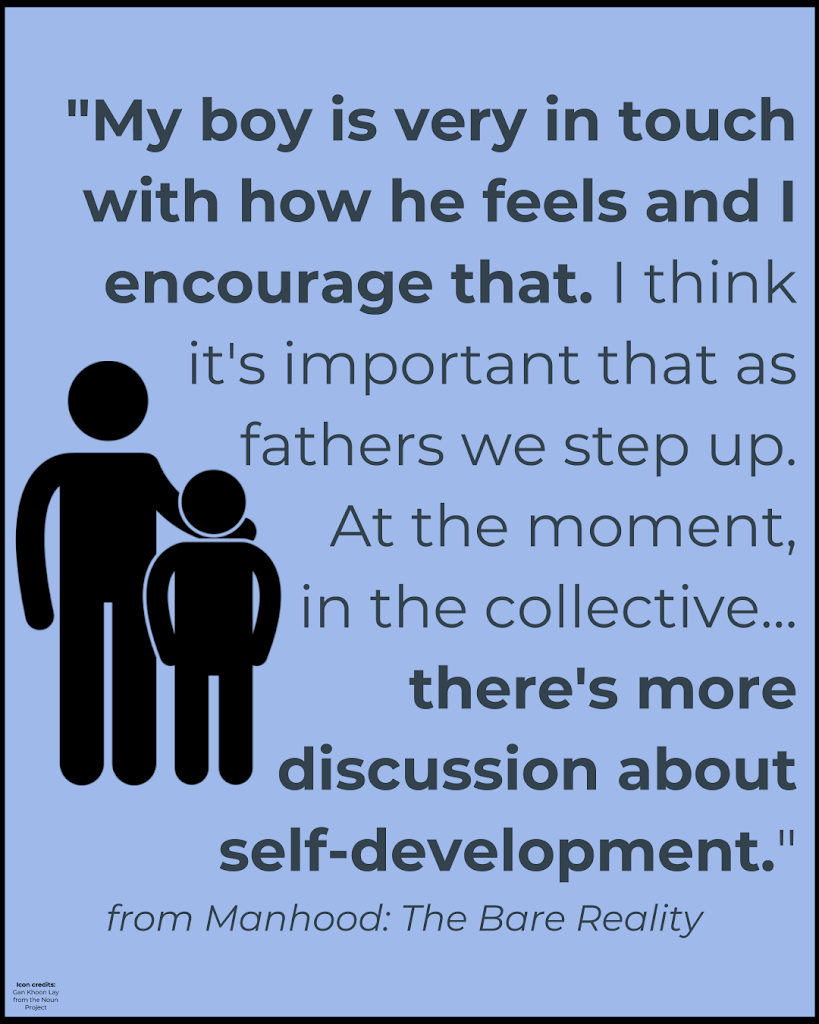
In writing a men’s health blog, I always try to be careful to not act like men have been systematically oppressed. Every ABSOT post runs through a review process by my Editor-in-Chief, Katie, and we’ve had numerous conversations about making sure that I’m keeping my eye on the ball with regards to the overall scope of society in regards to men and privilege. While I do get very passionate about men’s health, the truth is that men have done much of this damage to themselves by perpetuating harmful stereotypes and narratives.
Since the US election of 2016, which literally coincided with the day I was told my cancer had spread, there has been an inspiring movement of female empowerment between the #MeToo movement and more.
This isn’t to say we need a ‘manism’ movement, which is even echoed in this quote:
“I don’t think feminism should rewind, but there needs to be a way for men to say it’s hard for us, that we hurt. [But] that should take place away from feminism”
We can celebrate the differences without placing one sex above the other. Respecting differences and promoting equality for all gender identifications is important, especially in today’s world. It’s truly the only way we can progress as a human society. It’s ok for men to have feelings and share them, and it is ok for women to stand up for what they believe in when something isn’t right. At the end of the day, as the above quoted man said, we’re all human; we shouldn’t assign certain ‘tasks’ to certain genders.
We know “traditional manhood” is broken. “Transformational manhood” is in a step in the right direction, but we should continue moving closer to just “humanhood.” In closing, I feel this final quote really drove home the overall message of where we need to go from here:
“It’s divisive to have all these projections about what men and women do. None of it’s helpful. We have to just experience each other in the moment.”
*A big thank you to the author and publisher of this book for sending me a copy of this book to review. All opinions expressed are my own and I was not compensated (beyond saving on the cost of this book) for this review. I highly encourage you to check it out. Even though you may be uncomfortable with the idea of looking at 100 penises in a row, the stories are compelling and you’ll find yourself seeing beyond the pictures to get to the real meat of the book*
A self exam is how most cases of testicular cancer are detected early. Click the image for video directions or click here for a larger version
Want to work with Justin? Click here to learn more.
ABSOT is endorsed by the Laughter Arts and Sciences Foundation, a registered 501.c.3 charity. To make a tax-deductible contribution to help continue ABSOT's work with testicular cancer awareness and men's health, click the image below.

